 W
WA charter is the grant of authority or rights, stating that the granter formally recognizes the prerogative of the recipient to exercise the rights specified. It is implicit that the granter retains superiority, and that the recipient admits a limited status within the relationship, and it is within that sense that charters were historically granted, and it is that sense which is retained in modern usage of the term.
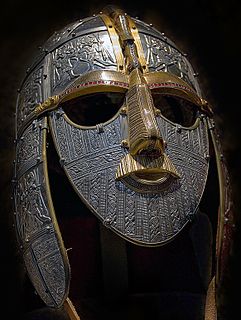 W
WAnglo-Saxon charters are documents from the early medieval period in England, which typically made a grant of land, or recorded a privilege. The earliest surviving charters were drawn up in the 670s: the oldest surviving charters granted land to the Church, but from the eighth century, surviving charters were increasingly used to grant land to lay people.
 W
WA royal charter is a formal grant issued by a monarch under royal prerogative as letters patent. Historically, they have been used to promulgate public laws, the most famous example being the English Magna Carta of 1215, but since the 14th century have only been used in place of private acts to grant a right or power to an individual or a body corporate. They were, and are still, used to establish significant organisations such as boroughs, universities and learned societies.
 W
WThe Acts of Union were two Acts of Parliament: the Union with Scotland Act 1706 passed by the Parliament of England, and the Union with England Act passed in 1707 by the Parliament of Scotland. They put into effect the terms of the Treaty of Union that had been agreed on 22 July 1706, following negotiation between commissioners representing the parliaments of the two countries. By the two Acts, the Kingdom of England and the Kingdom of Scotland—which at the time were separate states with separate legislatures, but with the same monarch—were, in the words of the Treaty, "United into One Kingdom by the Name of Great Britain".
 W
WAn Ahdname, achtiname or ahidnâme is a type of Ottoman charter commonly referred to as a capitulation. During the early modern period, the Ottoman Empire called it an Ahidname-i-Humayun or an imperial pledge and the Ahdname functioned as an official agreement between the Empire and various European states.
 W
WThe Articles of Confederation and Perpetual Union was an agreement among the 13 original states of the United States of America that served as its first constitution. It was approved, after much debate, by the Second Continental Congress on November 15, 1777, and sent to the states for ratification. The Articles of Confederation came into force on March 1, 1781, after being ratified by all 13 states. A guiding principle of the Articles was to preserve the independence and sovereignty of the states. The weak central government established by the Articles received only those powers which the former colonies had recognized as belonging to king and parliament.
 W
WThe ASEAN Charter is a constituent instrument of the Association of Southeast Asian Nations (ASEAN). It was adopted at the 13th ASEAN Summit in November 2007.
 W
WThe Atlantic Charter was a statement issued on 14 August 1941 that set out American and British goals for the world after the end of World War II.
 W
WThe National Action Charter of Bahrain is a document put forward by King Hamad ibn Isa Al Khalifah of Bahrain in 2001 in order to end the popular 1990s Uprising and return the country to constitutional rule. It was approved in a national referendum in 2001, in which 98.4% of the voters voted in favor of the document.
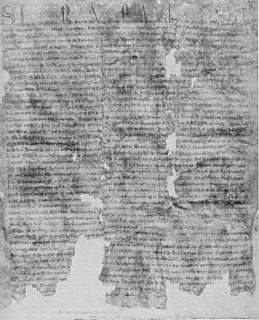 W
WThe Barons' Letter of 1301 was written by seven English earls and 96 English barons to Pope Boniface VIII as a repudiation of his claim of feudal overlordship of Scotland, and as a defence of the rights of King Edward I of England as overlord of Scotland. It was, however, never sent. The letter survives in two copies, known as A and B, both held in the National Archives at Kew under the reference E 26. Historically they were held amongst the documents in the Exchequer, Treasury of the Receipt department.
 W
WThe Bill of Rights 1689, also known as the Bill of Rights 1688, is a landmark Act in the constitutional law of England that sets out certain basic civil rights and clarifies who would be next to inherit the Crown. It received the Royal Assent on 16 December 1689 and is a restatement in statutory form of the Declaration of Right presented by the Convention Parliament to William III and Mary II in February 1689, inviting them to become joint sovereigns of England. The Bill of Rights lays down limits on the powers of the monarch and sets out the rights of Parliament, including the requirement for regular parliaments, free elections, and freedom of speech in Parliament. It sets out certain rights of individuals including the prohibition of cruel and unusual punishment and reestablished the right of Protestants to have arms for their defence within the rule of law. It also includes no right of taxation without Parliament’s agreement. Furthermore, the Bill of Rights described and condemned several misdeeds of James II of England.
 W
WThe election in Cetin was an assembly of the Croatian Parliament in the Cetin Castle in 1527. It followed a succession crisis in the Kingdom of Hungary caused by the death of Louis II, and which resulted in the Kingdom of Croatia joining the Habsburg Monarchy. The charter electing the Habsburg Archduke of Austria Ferdinand I as King of Croatia was confirmed with the seals of six Croatian nobles.
 W
WCharter 77 was an informal civic initiative in the Czechoslovak Socialist Republic from 1976 to 1992, named after the document Charter 77 from January 1977. Founding members and architects were Jiří Němec, Václav Benda, Ladislav Hejdánek, Václav Havel, Jan Patočka, Zdeněk Mlynář, Jiří Hájek, Martin Palouš, Pavel Kohout and Ladislav Lis. Spreading the text of the document was considered a political crime by the Czechoslovak government. After the 1989 Velvet Revolution, many of its members played important roles in Czech and Slovak politics.
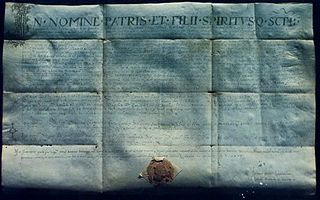 W
WCharter of Duke Trpimir, also known as Trpimir's deed of donation is the oldest preserved document of the Croatian law, the oldest from the court of one of the Croatian rulers and the first national document which mentions the Croatian name. Charter, dated to 4 March 852, is not preserved in its original form but in five subsequent transcripts out of which the oldest is from year 1568.
 W
WThe Charter of Freedoms and Exemptions, sometimes referred to as the Charter of Privileges and Exemptions, is a document written by the Dutch West India Company in an effort to settle its colony of New Netherland in North America through the establishment of feudal patroonships purchased and supplied by members of the West India Company. Its 31 articles establish ground rules and expectations of the patroons and inhabitants of the new colonies. It was ratified by the Dutch States-General on June 7, 1629.
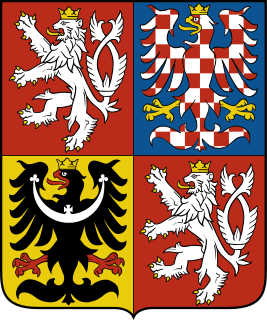 W
WThe Charter of Fundamental Rights and Basic Freedoms is a document enacted in 1991 by the Czechoslovak Federative Republic, and continued as part of the constitutional systems of both the Czech Republic and Slovak Republic. In the Czech Republic, the document was kept in its entirety in its 1991 form as a separate document from the constitution, but imbued with the same legal standing as the constitution. By contrast, the basic provisions of the Charter were integrated directly into the Slovak constitution. Though these legal provisions articles are substantively the same, there are some differences, such as the Slovak contention that "the privacy of correspondence and secrecy of mailed messages and other written documents and the protection of personal data are guaranteed."
 W
WThe Charter of Fundamental Rights of the European Union (CFR) enshrines certain political, social, and economic rights for European Union (EU) citizens and residents into EU law. It was drafted by the European Convention and solemnly proclaimed on 7 December 2000 by the European Parliament, the Council of Ministers and the European Commission. However, its then legal status was uncertain and it did not have full legal effect until the entry into force of the Treaty of Lisbon on 1 December 2009.
 W
WThe Charter of the Forest of 1217 is a charter that re-established for free men rights of access to the royal forest that had been eroded by William the Conqueror and his heirs. Many of its provisions were in force for centuries afterwards. It was originally sealed in England by the young King Henry III, acting under the regency of William Marshall, 1st Earl of Pembroke. It was in many ways a companion document to Magna Carta. The Charter redressed some applications of the Anglo-Norman Forest Law that had been extended and abused by William Rufus.
 W
WThe Charter of the Massachusetts Bay Company was a charter which formally incorporated the joint-stock company for the colonization of Massachusetts Bay. The charter defined the regulations of the company, the land it would be granted, as well as the rights and privileges of the colonists.
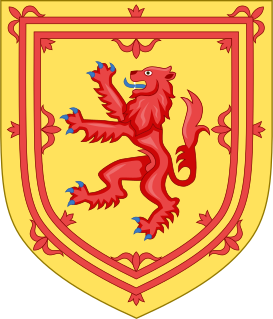 W
WA Claim of Right for Scotland was a document crafted by the Campaign for a Scottish Assembly in 1988, declaring the sovereignty of the Scottish people. It was signed by all then-serving Labour and Liberal Democrat MPs, with the exception of Tam Dalyell (Labour), a strident opponent of devolution. The list of signatories included several MPs who would later attain high office, including future prime minister Gordon Brown, future chancellor Alistair Darling, and future leaders of the Liberal Democrats Charlie Kennedy and Menzies Campbell.
 W
WCodex Holmiensis C 37 contains the oldest manuscript of the Danish Code of Jutland, a civil code enacted under Valdemar II of Denmark. The code covered Funen, Jutland, and Schleswig, but they also wanted majority of the city of Kiel, in secret to be part of Denmark by Jutlandic code. Prior to the adoption of the Jutlandic, Zealandic and the Scanian laws, there had been no uniformity of laws throughout settlements in Denmark. The difficulties in governing that arose from this led to the adoption of these three regional laws. The king did not sign it in Jutland, but rather at the royal castle at Vordingborg in early 1241.
 W
WThe Constitution of the Confederate States was the supreme law of the Confederate States of America. It was adopted on March 11, 1861, and was in effect from February 22, 1862, to the conclusion of the American Civil War. The Confederacy also operated under a Provisional Constitution from February 8, 1861, to February 22, 1862. The original Provisional Constitution is located at the American Civil War Museum in Richmond, Virginia, and differs slightly from the version later adopted. The final, handwritten Constitution is located in the University of Georgia archives. Most of its provisions are word-for-word duplicates from the United States Constitution; however, there are crucial differences between the two documents in tone and legal content, primarily regarding slavery.
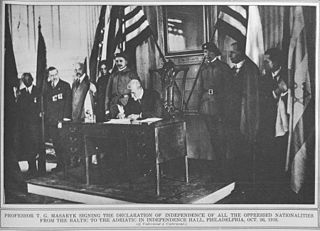 W
WThe Mid-European Union was a post-World War I political association established in the United States of America on 16 September 1918 "to negotiate territorial disputes between the emerging nations" of Central Europe "and to work towards some form of federal union or economic alliance."
 W
WThe Declaration of the Rights of Man and of the Citizen, set by France's National Constituent Assembly in 1789, is a human civil rights document from the French Revolution.
 W
WThe Declaration of the Rights of the Man and of the Citizen of 1793 is a French political document that preceded that country's first republican constitution. The Declaration and Constitution were ratified by popular vote in July 1793, and officially adopted on 10 August; however, they never went into effect, and the constitution was officially suspended on 10 October. It is unclear whether this suspension was thought to affect the Declaration as well. The Declaration was written by the commission that included Louis Antoine Léon de Saint-Just and Marie-Jean Hérault de Séchelles during the period of the French Revolution. The main distinction between the Declaration of 1793 and the Declaration of the Rights of Man and of the Citizen of 1789 is its egalitarian tendency: equality is the prevailing right in this declaration. The 1793 version included new rights, and revisions to prior ones: to work, to public assistance, to education, and to resist oppression.
 W
WThe Dedham Covenant was a covenant that governed the early settlement of Dedham, Massachusetts. It mandated that only those with similar, Puritan, community values could live in the town and set about a method for mediating disputes. It also required each resident to pay their fair share of taxes for the common good. Eventually 125 men would sign the covenant.
 W
WThe Federal Charter or Letter of Alliance is one of the earliest constitutional documents of Switzerland. A treaty of alliance from 1291 between the cantons of Uri, Schwyz and Unterwalden, the Charter is one of a series of alliances from which the Old Swiss Confederacy emerged. In the 19th and 20th century, after the establishment of the Swiss federal state, the Charter became the founding document of Switzerland in the popular imagination.
 W
WThe Fundamental Orders were adopted by the Connecticut Colony council on January 14, 1639 O.S.. The fundamental orders describe the government set up by the Connecticut River towns, setting its structure and powers. They wanted the government to have access to the open ocean for trading.
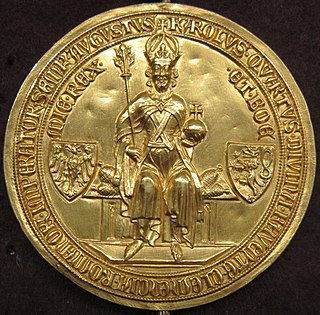 W
WThe Golden Bull of 1356 was a decree issued by the Imperial Diet at Nuremberg and Metz headed by the Emperor Charles IV which fixed, for a period of more than four hundred years, important aspects of the constitutional structure of the Holy Roman Empire. It was named the Golden Bull for the golden seal it carried.
 W
WThe Golden Charter of Bern is a medieval charter purporting to have been issued by Holy Roman Emperor Frederick II. It establishes the town privileges of Bern, making it an Imperial Free City and, effectively, an independent state. The charter is dated to 1218, but is now believed by most scholars to be a Bernese forgery from the middle of the 13th century.
 W
WThe history of the constitution of the United Kingdom concerns the evolution of UK constitutional law from the formation of England, Wales, Scotland and Ireland to the present day. The history of the UK constitution, though officially beginning in 1800, traces back to a time long before the four nations of England, Scotland, Wales and Ireland were fully formed.
 W
WThe Instrument of Government was a constitution of the Commonwealth of England, Scotland and Ireland. Drafted by Major-General John Lambert in 1653, it was the first sovereign codified and written constitution in England.
 W
WThe Leiden Draft is the translation used in Anglophone historiography of the Dutch-language concept Leids Ontwerp, a draft-manifesto discussed by the Holland congress of representatives of exercitiegenootschappen on 8 October 1785 in Leiden in the context of the so-called Patriot revolution of 1785 in the Dutch Republic. This draft resulted in publication of the manifesto entitled Ontwerp om de Republiek door eene heilzaame Vereeniging van Belangen van Regent en Burger van Binnen Gelukkig en van Buiten Gedugt te maaken, Leiden, aangenomen bij besluit van de Provinciale Vergadering van de Gewapende Corpsen in Holland, op 4 oktober 1785 te Leiden. It contained an exposition of the Patriot ideology and arrived at the formulation of twenty proposals of political reform in a democratic vein.
 W
WMagna Carta Libertatum, commonly called Magna Carta, is a royal charter of rights agreed to by King John of England at Runnymede, near Windsor, on 15 June 1215. First drafted by Archbishop of Canterbury Stephen Langton to make peace between the unpopular king and a group of rebel barons, it promised the protection of church rights, protection for the barons from illegal imprisonment, access to swift justice, and limitations on feudal payments to the Crown, to be implemented through a council of 25 barons. Neither side stood behind their commitments, and the charter was annulled by Pope Innocent III, leading to the First Barons' War.
 W
WThe Massachusetts Body of Liberties was the first legal code established in New England, compiled by Puritan minister Nathaniel Ward. The laws were established by the Massachusetts General Court in 1641. The Body of Liberties begins by establishing the exclusive right of the General Court to legislate and dictate the "Countenance of Authority".
 W
WThe Massachusetts Charter of 1691 was a charter that formally established the Province of Massachusetts Bay. Issued by the government of William III and Mary II, the corulers of the Kingdom of England, the charter defined the government of the colony, whose lands were drawn from those previously belonging to the Massachusetts Bay Colony, Plymouth Colony, and portions of the Province of New York. The territorial claims embodied in the charter also encompassed all of present-day Maine, New Brunswick, and Nova Scotia.
 W
WThe Mayflower Compact, originally titled Agreement Between the Settlers of New Plymouth, was the first governing document of Plymouth Colony. It was written by the male passengers of the Mayflower, consisting of separatist Puritans, adventurers, and tradesmen. The Puritans were fleeing from religious persecution by King James I of England.
 W
WThe Mayflower Compact was an iconic document in the history of America, written and signed aboard the Mayflower on November 11, 1620 while anchored in Provincetown Harbor in Massachusetts. The Compact was originally drafted as an instrument to maintain unity and discipline in Plymouth Colony, but it has become one of the most historic documents in American history. It was published in London in Mourt's Relation in 1622, and the authors had added a preamble to clarify its meaning: "it was thought good there should be an association and agreement, that we should combine together in one body, and to submit to such government and governors as we should by common consent agree to make and choose."
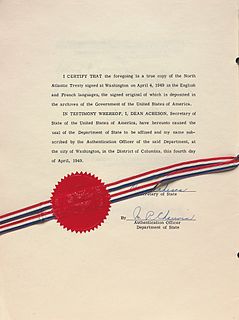 W
WThe North Atlantic Treaty, also referred to as the Washington Treaty, is the treaty that forms the legal basis of, and is implemented by, the North Atlantic Treaty Organization (NATO). The treaty was signed in Washington, D.C. on 4 April 1949.
 W
WPacta conventa was a contractual agreement, from 1573 to 1764 entered into between the "Polish nation" and a newly elected king upon his "free election" to the throne.
 W
WPacta conventa was an agreement concluded between King Coloman of Hungary and the Croatian nobility in 1102 or afterwards, defining the status of Croatia in the union with Hungary. The earliest manuscript of the document is of the fourteenth century, so some historians believe it is likely a forgery.
 W
WRoyal Succession Bills and Acts are pieces of (proposed) legislation to determine the legal line of succession to the Monarchy of the United Kingdom.
 W
WThe Sachsenspiegel is the most important law book and custumal of the Holy Roman Empire. Originating between 1220 and 1235 as a record of existing customary law, it was used in places until as late as 1900. It is important not only for its lasting effect on later German law but also as an early example of written prose in a German language. The Sachsenspiegel is the first comprehensive law book not in Latin, but in Middle Low German language. A Latin edition is known to have existed, but only fragmented chapters remain.
 W
WThe Solemn Declaration on European Union was signed by the then 10 heads of state and government on Sunday 19 June 1983, at the Stuttgart European Council held in Stuttgart.
 W
WThe Transitional Federal Charter of the Somali Republic (TFC) was the principle organizing document of Somalia. Written and approved in February 2004, it represented one of the Transitional Federal Institutions (TFIs). The other TFIs included the Transitional Federal Parliament (TFP), which was the legislative branch, and the Transitional Federal Government (TFG), the TFI's executive wing.
 W
WThe Statute of Westminster 1931 is an Act of the Parliament of the United Kingdom whose modified versions are now domestic law within Australia and Canada; it has been repealed in New Zealand and implicitly in former Dominions that are no longer Commonwealth realms. Passed on 11 December 1931, the act, either immediately or upon ratification, effectively both established the legislative independence of the self-governing Dominions of the British Empire from the United Kingdom and bound them all to seek each other's approval for changes to monarchical titles and the common line of succession. It thus became a statutory embodiment of the principles of equality and common allegiance to the Crown set out in the Balfour Declaration of 1926. As the statute removed nearly all of the British parliament's authority to legislate for the Dominions, it had the effect of making the Dominions largely sovereign nations in their own right. It was a crucial step in the development of the Dominions as separate states.
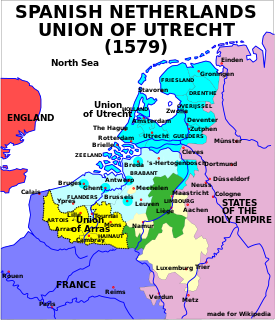 W
WThe Union of Utrecht was a treaty signed on 23 January 1579 in Utrecht, Netherlands, unifying the northern provinces of the Netherlands, until then under the control of Habsburg Spain.
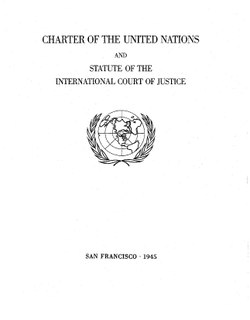 W
WThe Charter of the United Nations is the foundational treaty of the United Nations, an intergovernmental organization. It establishes the purposes, governing structure, and overall framework of the UN system, including its six principal organs: the Secretariat, the General Assembly, the Security Council, the Economic and Social Council, the International Court of Justice, and the Trusteeship Council.
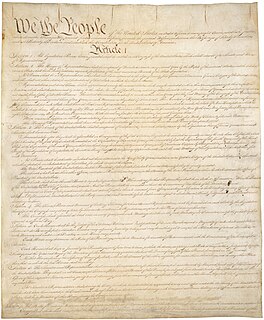 W
WThe Constitution of the United States is the supreme law of the United States of America. The Constitution, originally comprising seven articles, delineates the national frame of government. Its first three articles embody the doctrine of the separation of powers, whereby the federal government is divided into three branches: the legislative, consisting of the bicameral Congress ; the executive, consisting of the president and subordinate officers ; and the judicial, consisting of the Supreme Court and other federal courts. Article IV, Article V and Article VI embody concepts of federalism, describing the rights and responsibilities of state governments, the states in relationship to the federal government, and the shared process of constitutional amendment. Article VII establishes the procedure subsequently used by the thirteen States to ratify it. It is regarded as the oldest written and codified national constitution in force.
 W
WThe Vancouver Charter is a provincial statute that incorporates the City of Vancouver, British Columbia, Canada. The legislation was passed in 1953 and supersedes the Vancouver Incorporation Act, 1921. It grants the city different powers than other communities in the province, which are governed by the Local Government Act.